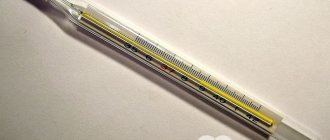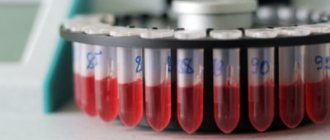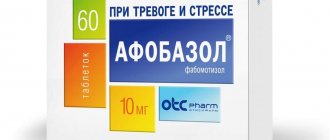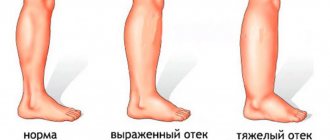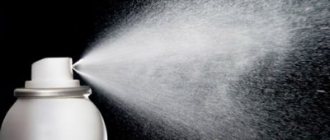For patients with acute psychoemotional disorders, barbiturates, derivatives of barbituric acid, are prescribed as sedatives and hypnotics. Medicines act by general depression of the nervous system, without targeting point receptors. The non-selective principle of exposure to barbiturates is permissible in a minimal dosage, if standard methods are ineffective. In fact, drugs based on barbituric acid are drugs. Poisoning with phenobarbital (a derivative of C₄H₄N₂O₃) is similar to drug intoxication, with the threat of serious consequences.
Mechanism of action
The question of exactly how phenobarbital affects humans has not been fully studied, which is why clinical studies are still being conducted. However, we list those known mechanisms of its action that doctors rely on when prescribing:
- The hypnotic and sedative effect is achieved due to:
- suppression of the sensory zone of the cerebral cortex and calcium current;
- enhancing and simulating GABA inhibition on synoptic transmission;
- decreased functional functioning of the brain.
- The anticonvulsant effect occurs due to:
- suppression of mono- and polysynoptic nerve impulses;
- decreased excitability of neurons in the epileptogenic focus.
- The detoxification effect is caused by increased activity of microsomal liver enzymes.
At excessive doses, phenobarbital depresses cerebral functions, and small amounts of this medicine can cause a decrease in body temperature and a weakening of the smooth muscle tone of the gastrointestinal tract.
Despite the fact that the vast majority of barbiturates have an anticonvulsant mechanism of action, phenobarbital is one of the few drugs that allows it to be used for the treatment of epilepsy, since the desired effect is achieved at doses that do not cause drowsiness.
It should be noted that in order for phenobarbital not to cause harm and to have the maximum therapeutic effect, it should not be taken with certain medications:
- acetazolamide – possible development of rickets;
- MAO inhibitors, valproic acid – overdose and lethargy;
- felodipine, verapamil and nimodipine - their action is ineffective;
- primidone and felbamate – increased central nervous system depression;
- folic acid – reduces the effect of phenobarbital;
- caffeine – reduces the sedative and hypnotic effect.
Needs further clarification. If a blood test is taken, a person taking phenobarbital should notify the laboratory technician or treating specialist, as this drug causes a drop in the level of bilirubin in the blood plasma.
How addiction occurs
An important feature of drugs in this group is that they can be addictive. People who have been using phenobarbital for some time may continue to use it even when there is no urgent need for it. They are attracted by the feeling of complete relaxation and calm.
Phenobarbital takes a relatively long time to be eliminated from the body, which means that regular use can lead to an overdose, even if taken in small doses. Active substances will accumulate in the body faster than the kidneys can remove them.
At the same time, the drug quickly becomes addictive. Since the effect of its action decreases after a few weeks, a person tries to increase the dose without even feeling its maximum amount in the body. This is the reason for frequent overdoses of phenobarbital.
Do you need treatment for phenobarbital? Find out the methods, timing and cost during a consultation
Therapeutic dosages
A sufficient therapeutic dose for the onset of a hypnotic effect is 0.2 g.
Phenobarbital (Luminal) is prescribed only when insomnia develops against a background of agitation and restlessness.
It should be noted that phenobarbital is absorbed and distributed throughout the body very slowly. That is why it is recommended to take it as a sleeping pill at least 1 hour before the desired time of sleep. Phenobarbital is eliminated from the body within 2-4 days in adults and 4-7 days in children, and traces of it in the urine are detected even after 14 days.
Extremely slow elimination from the body contributes to high accumulation, which is why phenobarbital, as a sleeping pill, is recommended to be taken in short courses - alternating 3-4 days of administration with 1-2 days of “rest”.
The therapeutic dose of phenobarbital for the treatment of epilepsy and neuroses is 0.05-0.1 g.
Maximum permissible: single dose – 0.4 g; daily dose – 0.6 g.
What is Phenobarbital, origin, history
The first substance from this group was obtained in 1902 in Germany. Two years later, phenobarbital was synthesized. It was obtained as a sedative hypnotic. By 1912, phenobarbital was released into the pharmaceutical market under the name Luminal.
Until the mid-twentieth century, Luminal remained the most popular among sleeping pills. It was pushed out of the market by the newest generation of hypnotics - benzodiazepine derivatives.
For a long time, the drug was used only as a sleeping pill, but subsequently the anticonvulsant capabilities of phenobarbital were revealed.
Phenobarbital as a drug
According to medical statistics, addictions caused by sleeping pills arise from the abuse of barbiturate drugs with a medium and short half-life. Phenobarbital is a drug with a long half-life, so it is not widely used as a narcotic substance. However, in 2013, in Russia, phenobarbital was included in the “List of Narcotic Drugs and Psychotropics”, because:
- in persons with high tolerance to phenobarbital, taking extremely high doses still causes the formation of mental and then physical dependence.
- Those who want to experience a euphoric, alcohol-like intoxication are not bothered by the onset of a long-term hypnotic effect.
Taking barbiturates is dangerous because the dose that will cause death and the narcotic dose are not very different - in order to feel euphoric intoxication, you must immediately take double or triple the therapeutic dose. However, after 1-2 months, addiction occurs. The already overestimated dose increases further, which becomes the cause of overdose.
Consequences of phenobarbital abuse
When Phenobarbital is prescribed for medicinal purposes, the substances usually do not cause addiction. Contrary to popular belief, it is not the main assistant in the treatment of epilepsy. The medical community decided to limit the use of this drug. Because long-term use of this substance causes serious addiction, which is very difficult to treat. After using this drug, a person begins a period of withdrawal. This substance is very cheap and acts for a long time, but with constant use a person will develop problems:
- with memory,
- with concentration,
- with changes in behavior.
The use of this drug provokes problems in the psychological development of children. This drug is usually used with other pharmaceutical drugs and alcohol. But mixing it with other dopings leads to serious deviations in the psychological state. A person's behavior changes greatly. The period of withdrawal causes constant stimulation of the nervous system; because of this, the person begins to be very aggressive, he ceases to control his actions and can be dangerous for the people around him, both relatives and simply those who happen to be nearby.
The addict is in a state of insomnia. If other medications are used to help you fall asleep, the person will experience terrible nightmares.
Phenobarbital and alcohol
When combining barbiturates with alcohol, there are often cases of “double” inhibition of the central nervous system. In this case, the action can develop according to 2 scenarios:
- In alcoholics or people who frequently drink alcohol, the body metabolizes luminal more quickly.
- In people who rarely drink alcohol, the concomitant use of phenobarbital and an alcoholic drink will cause a significant delay in the expected effect of the hypnotic or other therapeutic effect.
There is an assumption that many people develop simultaneous cross-resistance to both alcohol and Luminal.
Signs of Phenobarbital Abuse
In case of an overdose, a person will have terrible nightmares, he will be tired and overwhelmed. The drug addict also begins to experience depression of the medulla oblongata. The drug is similar to truth serum, the use of which leads to serious consequences:
- breathing problems;
- reducing skin sensitivity;
- stuttering and slurred speech;
- lowering blood pressure,
- decreased heart rate;
- problems with the genitourinary system;
- a strong decrease in temperature.
Overdose symptoms
The following clinical picture is typical for chronic phenobarbital poisoning:
- constant drowsiness and lethargy;
- deep apathy against a background of constant irritability;
- periodic attacks of dizziness;
- decreased mental abilities and confusion of speech;
- possible disturbances from the gastrointestinal tract and urinary system;
- development of skin lesions - scarlet-like erythema, urticaria.
But what are the signs by which acute phenobarbital poisoning can be recognized:
- severe dizziness, feeling of lightheadedness;
- hiccups, nausea, vomiting;
- pain in the eyes;
- cyanosis of the skin and profuse sweat;
- drooling, increased sniffling;
- rare and intermittent breathing;
- the pupils first sharply constrict, and after a while they dilate greatly and do not react to light;
- urine production stops.
Further, acute intoxication proceeds in the following order - 4 clinical stages:
- Stage of falling asleep - despite apathy, decreased reactions and confusion, verbal contact is possible. Hallucinations may develop.
- The stage of superficial coma is loss of consciousness, but some reflexes, although weak, are present. Body temperature rises to 39-40 °C.
- Stage of deep coma - all reflexes are absent, complete respiratory depression, up to complete paralysis and death.
- Stage of post-comatose state. After emerging from a coma, psychomotor agitation accompanied by tearfulness and persistent sleep disturbances occur.
On a note. In addicted people, 4-5 months after the first overdose, even taking limited doses does not cause characteristic primary symptoms - loss of consciousness immediately occurs.
Characteristic signs of intoxication
Phenobarbital is prescribed to patients with epileptic syndrome, in states of deep depression, and with sleep disorders. Has anticonvulsant and sedative effects. The permissible dosage is 10-100 mg (depending on the purpose), available only with a doctor's prescription.
The drug is a long-acting hypnotic. The effect is felt after 1.5-2 hours and lasts for 10-13 hours. After entering the body, it penetrates into the plasma, is distributed throughout organs and tissues, and inhibits the functioning of the respiratory system and the reaction of nerve receptors in the brain. After a day, external symptoms disappear, but the concentration of the substance in the body remains for 72 hours.
If you take phenobarbital 1-2 times a day, the remains of the sleeping pill accumulate, gradually increasing the intoxicating effect. The result of long-term use manifests itself in the form of a sedation; exceeding the dose provokes deep anesthesia. Drug dependence develops, depressing mental and somatic functions.
Symptoms of poisoning appear gradually, depending on the dosage and duration of the course. When taking phenobarbital daily, with a dosage of more than 100 mg per day, disorders develop on days 5–7.
Symptoms of chronic intoxication
- apathy;
- irritability;
- dizziness;
- confused speech;
- slower reaction to sounds and actions;
- impaired coordination of movements;
- drowsiness;
- slow blinking.
There may be hallucinations, a sudden change in mood - from apathy to nervous excitement, hysterics. In patients with diseases of the cardiovascular system, respiratory failure develops, followed by panic attacks. In 41% of cases, the consequences are gastrointestinal disorders (pain, constipation, diarrhea), stagnation of urine.
Symptoms of acute intoxication
- ataxic syndrome - persistent loss of coordination;
- confusion, loss of adequacy of perception;
- Strong headache;
- decreased urine output with normal drinking;
- drop in blood pressure (below 80/50);
- cyanosis of the skin;
- erratic movement of the pupils;
- meaningless speech;
- tachycardia;
- breathing disorder (frequency increases, then drops sharply, lack of air).
In case of an overdose of phenobarbital, the eyes are wide open and the patient cannot control the movement of the eyeballs. The pupils narrow, the pulse and breathing gradually decrease. Hemorrhage appears on the skin - subcutaneous hemorrhage. It is necessary to determine the risks of death.
Emergency assistance in case of overdose
Important! There is no antidote or antidote against Phenobarbital, so barbiturate poisoning requires emergency care, which must begin with calling an ambulance.
Before the doctors arrive, you need to act in the following order:
- Rinse the stomach two or three times by repeatedly taking 3-4 glasses of warm water and inducing vomiting, for example, by taking 1 glass of salt water (1 teaspoon of salt per 200 ml).
- Give a solution of 20-50 g of activated carbon to drink, but after 10 minutes be sure to induce vomiting again.
- Glauber's salt can help remove phenobarbital from the body, but taking other laxatives is not recommended.
- Give a diuretic and provide plenty of hot drink - strong tea or coffee.
- Maintain a conversation with the victim and prevent him from falling asleep.
If a person is unconscious, you should lay him on his side, make sure that his tongue does not stick and wait for the specialists to arrive. If necessary, perform artificial respiration and chest compressions.
Alcohol compatibility
The combination of phenobarbital with ethyl-containing drugs is unacceptable. Transient depression of the central nervous system is provoked, the risk index increases 3 times. Severe intoxication develops within 0.5-2 hours, depending on the dosage of the drug.
Interaction with alcohol is also excluded if barbiturates are taken as a course, in an acceptable dose. Drinking alcohol, even 3 days after the end of therapy, will cause intoxication with subsequent complications. Depending on the amount drunk, the symptoms appear clearly or not externally. But poisoning of organs and inhibition of brain receptors occurs in 100% of cases.
If signs of poisoning appear, it is necessary to rinse the stomach, take sorbent, and call an ambulance. Hospitalization of the patient with combined alcohol and phenobarbital poisoning is mandatory. Therapy is carried out in a standard manner - prescribing an antidote, preventing pulmonary failure, purifying the blood, maintaining blood pressure, diuretics, laxatives.
Adherents of sedatives - Corvalol, Valocordin, Barbovala - should remember that these medications contain phenobarbital. At first glance, harmless drugs, if taken incorrectly, provoke the development of severe chronic diseases. That is why drugs throughout the world are only available with a doctor's prescription.
Consequences and side effects
People who abuse phenobarbital should know and remember the consequences that are possible after an overdose.
- From the cardiovascular system - a steady decrease in heart rate and blood pressure, vascular collapse.
- From the hematopoietic system - thrombocytopenia, megaloblastic anemia, agranulocytosis.
- From the central nervous system - neuroses, lethargy, impaired thinking, hallucinations, apnea, nightmares.
- From the gastrointestinal tract - chronic constipation, accompanied by nausea and vomiting.
- On the part of the immune system - local swelling, skin rashes, exfoliative dermatitis.
The most common complications after phenobarbital poisoning include the development of secondary pneumonia, tracheobronchitis, or the occurrence of bedsores.
Interaction
Combination with drugs that depress the nervous system, as well as ethanol-containing drugs and ethanol can lead to increased CNS depression. Caffeine reduces the hypnotic effect of phenobarbital.
Interaction with MAO inhibitors and methylphenidate causes an increase in plasma levels of phenobarbital, so that the toxic effect and inhibitory effect on the nervous system are enhanced.
The intensity and duration of action of the following drugs may be reduced when combined with Phenobarbital: GCS, chloramphenicol, Dacarbazine, Metronidazole, Carbamazepine and anticonvulsants from the succinimide group, anticoagulants (Indandione and Coumarin derivatives), Doxycycline, Chlorpromazine, vitamin D, Corticotropin, Cyclosporine, digitalis glycosides , Quinidine, estrogen-containing oral contraceptives, tricyclic antidepressants, Fenoprofen, Phenylbutazone, xanthines.
Concomitant use with acetazolamide can provoke osteomalacia and rickets.
Taking valproic acid leads to an increase in plasma levels of phenobarbital, which can cause pronounced sedation and lethargy. The level of valproic acid in plasma decreases slightly.
Combination with Verapamil, Felodipine, Nimodipine also leads to a decrease in their content in plasma.
Interactions with Halothane, Ftorotan, Enflurane and Methoxyflurane may cause increased metabolism of anesthetic drugs, which increases the likelihood of toxic effects on the liver (and also on the kidneys in the case of Methoxyflurane).
Taking Griseofulvin leads to a decrease in the degree of its absorption from the intestine.
Combination with Maprotiline in high dosages reduces the seizure threshold and the anticonvulsant effect of barbiturates.
The effectiveness of Paracetamol may be reduced when taken with Phenobarbital. Hepatotoxicity may develop.
A daily dose of Pyridoxine of 200 mg reduces the level of phenobarbital in plasma, and simultaneous use with Primidone and Felbamate, on the contrary, increases it.
If there is a lack of folic acid in the body, taking medications with this acid leads to a decrease in the effectiveness of Phenobarbital.
Combination with other sedatives can lead to severe respiratory depression.
Contraindications[ | ]
The drug is contraindicated in cases of severe damage to the liver and kidneys with impairment of their functions, alcoholism, drug addiction, myasthenia gravis. For hypersensitivity, severe anemia, hyperkinesis, adrenal hypofunction, thyrotoxicosis, depression, broncho-obstructive pulmonary diseases, pregnancy (I and III trimesters), during lactation (to avoid teratogenic effects). It should also be taken into account that in nursing mothers, when taking phenobarbital, it is found in significant quantities in milk.
Kinetic features
Is Luminal absorbed? The instructions for use indicate that inside the body it undergoes slow and complete absorption. The bioavailability of this drug is approximately 80%, and the connection with plasma proteins is about 30%.
The active component of this drug penetrates into mother's milk, as well as through the placenta. In addition, it is capable of distribution in fetal tissues.
Excretion of "Luminal" occurs through the kidneys in unchanged form and in the form of metabolites. Phenobarbital is characterized by fairly pronounced cumulation. Impaired kidney function causes a prolongation of its action.
Treatment
In the hospital, therapy is carried out aimed at eliminating toxins as quickly as possible. Phenobarbital has no antidotes, so recovery is accomplished by introducing substance antagonists into the body. The person’s lungs are ventilated, cleaning them, and connected to an artificial respiration apparatus in severe cases.
Forcing diuresis and alkalizing the blood accelerates the process of removing harmful substances. Anti-shock procedures and hemodialysis are performed if the kidneys do not work and cannot remove Phenobarbital from the body.
Adverse reactions
Even without an overdose, the following adverse reactions may occur due to treatment with Phenobarbital:
- coordination disorder, dizziness, impotence, fainting, excessive arousal, lethargy, anxiety, tremors of the upper limbs, irritability, headache, drowsiness, lethargic sleep, respiratory depression, hallucinations, depression, nightmares, problems with thinking, hyperkinesia, an aftereffect that manifested by lethargy, weakened concentration, slow psychomotor reaction,
- rickets, disorder of bone formation,
- vomiting, stool retention, liver dysfunction,
- hypotension, collapse,
- reduction of all blood elements,
- allergies, death from Phenobarbital is possible,
- drug addiction.
If you stop taking the drug abruptly, phenobarbital withdrawal symptoms appear:
- headache, nightmares, difficulty falling asleep, drowsiness, anxiety, restlessness, vertigo, hand tremors, muscle twitching, convulsions, hallucinations,
- vision problems,
- nausea, vomiting,
- pressure drop,
- lack of folate, decreased calcium levels in the blood,
- weakened libido, erectile dysfunction.
Video: doctor's reviews of the drug Phenobarbital
Article rating:
( 1 ratings, average: 5.00 out of 5)
Share with friends:
You may also be interested in:
Drotaverine overdose (poisoning) - lethal dosage
Capoten poisoning - consequences
Anaprilin overdose - how many tablets for death
Overdose of "Senade" - how many tablets you need to take, symptoms and consequences
Indications for use of Phenobarbital
The main indication for taking the medicine is epilepsy. But the drug is in demand by doctors not only as an anticonvulsant; Its calming and hypnotic properties are also used.
Indications for use:
- epilepsy;
- convulsive syndrome of any type;
- sleep disorders;
- attacks of panic and anxiety;
- meningitis, eclampsia and tetanus when status epilepticus develops;
- chorea;
- spastic paralysis;
- treatment and prevention of hyperbilirubinemia;
- viral encephalitis (complications of measles, influenza, chickenpox, rubella).
This drug can even be prescribed to infants when they develop “jaundice” - hyperbilirubinemia. It is observed in 30-50% of full-term babies in the first week of life, as well as in 75-90% of cases when the baby was born prematurely. This is due to the fact that a very high concentration of bilirubin is created in the child’s blood, which is unable to leave the body in a timely manner, since the liver enzymes are quite immature. The main danger of this condition is that bilirubin can damage the brain. As for treatment, babies are given Phenobarbital, as it increases liver activity, which will help get rid of increased bilirubin levels. The duration of therapy is no more than one week.
Symptoms of poisoning
Contraindications for use:
- pregnancy;
- liver pathologies;
- individual intolerance;
- myasthenia gravis;
- alcoholism;
- hyperthyroidism;
- drug addiction;
- lactation period;
- renal failure;
- depression, diabetes;
- bronchospasm;
- porphyria.
You can take this drug only as prescribed by your doctor. You should not self-medicate, as this is extremely dangerous.
Consequences of an overdose of Corvalol
Corvalol is a mild sedative, moderate antispasmodic and hypotensive agent. The correct dose is 15-30 drops three times a day. Drink with water, drop on sugar. What happens if this dose is exceeded? Can an overdose of Corvalol kill? And after what dose do unpleasant consequences occur?
Phenobarbital is the basis of the drug. Bromisovalleric acid in the form of ethyl ester is an excipient. Caustic sodium. Peppermint oil. Distilled water.
Phenobarbital is a chemical compound with a sedative effect. There is very little of it in the preparation. It is addictive, which means that the dose has to be increased all the time. Bromisovaleric acid and peppermint oil enhance the effects of phenobarbital.
Ethyl bromizovallerianate is also not a completely harmless substance. It contains bromine, which causes poisoning if taken for a long time. If the dose is significantly exceeded, the consequences can be severe:
- pulmonary diseases;
- unmotivated depression;
- allergies of unknown etiology;
- clarity of consciousness disappears;
- apathy.
For those who like to self-medicate, we inform you that aspirin has no antidote. Therefore, a harmless pill for fever and headache should be prescribed by a doctor, no matter how trivial it may sound.
Overdose of aspirin in old age is most likely. This is due to long-term use of the drug and some erasure of symptoms.
Rarely, tinnitus and hearing loss are associated with taking salicylates; usually people perceive negative signs as a consequence of age-related changes. When examining patients taking salicylic acid medications for a long time, the doctor must differentiate aspirin overdose from other pathological signs.
The combination of these pathologies can lead to the development of aspirin-induced asthma and an attack of suffocation.
An overdose or mild aspirin poisoning may go away without a trace over time. More severe poisoning threatens the development of many chronic pathologies:
- renal and liver failure;
- bronchial asthma;
- peptic ulcer;
- various bleedings.
Here it is, harmless and familiar aspirin. Be careful.
If you take Corvalol after alcohol or in the reverse order, a number of side effects may appear. Alcohol and Corvalol have the opposite effect on the cardiovascular system, because when drinking alcohol, an increase in blood pressure is observed, and Corvalol helps to slow down the rhythm.
Overlapping effects can lead to imbalance. Such an imbalance, even if people drink Corvalol with beer containing a minimal amount of alcohol, can cause damage to heart tissue and blood vessels.
Another danger to the cardiovascular system lies in the fact that people under the influence of alcohol simply do not know how to stop. If they drink a large dose of Corvalol after alcohol, there is a risk of complete cardiac arrest or rupture of the myocardial wall, which leads to the death of a person from a heart attack.
Taking Corvalol and alcohol can also affect the liver, becoming the first step to cirrhosis.
Phenobarbital is a classic barbiturate, previously actively used as a hypnotic. Currently, the active substance is included in a number of drugs under different commercial names and, in case of overdose, has an active pathological effect on the body.
What symptoms accompany phenobarbital poisoning? How serious are the consequences of this process for the body? Is this barbiturate compatible with alcohol? You will read about this and much more in our article.
Composition of the drug and release form
What does the drug "Luminal" contain? The instructions for use indicate that this drug contains an active ingredient such as phenobarbital. The product in question also includes the following additional ingredients: potato starch, gelatin, talc and calcium stearate.
The drug "Luminal", the indications of which are presented below, goes on sale in the form of a powder intended for the preparation of an injection solution. This product can also be purchased in the form of 100 mg tablets, which are packaged in contour cells and paper packages, respectively.
Effects of phenobarbital on the body
The drug affects the functioning of the cerebral cortex and also causes inhibited functioning of the thalamus, which leads to a sedative-hypnotic effect. The anticonvulsant effect is achieved by reducing neuronal excitability, which is caused by some psychotropic medications or a person’s mental disorder.
The sleep that occurs when using phenobarbital is significantly different from the healthy physiological sleep of an ordinary person. The REM sleep phase is shortened, and the third and fourth stages of slow-wave sleep are reduced. The sleep structure is completely restructured. The effect of the sleeping pill develops in less than an hour and lasts steadily for 8 hours, in some cases it can reach 12 hours. The effect decreases 2 weeks after the start of use.
In small doses, the medication provides a calming effect and, in combination with antispasmodic substances, helps with neurovegetative disorders.
Hypnotic doses of phenobarbital lead to a decrease in metabolic rate. They have a depressing effect on the main centers of thermoregulation, as a result of which a person’s temperature decreases.
Phenobarbital is absorbed almost immediately by the small intestine after oral administration. The half-life from the blood is approximately 80 hours; in children and newborns this figure may exceed 100 hours. The drug is evenly distributed throughout all human organs and also penetrates the placenta and breast milk. Phenobarbital is excreted from the body by the kidneys.
Reviews
Most reviews about this drug are left by parents of young children. They claim that the drug Luminal works well against diseases such as epilepsy and convulsive conditions. Also, this medication is often used as part of a combination treatment, supplemented with painkillers.
Many patients talk about the high effectiveness of the drug "Luminal". However, they immediately stipulate that when taking this drug, you should strictly monitor its dosage and combination with other drugs.
Sometimes the medicine in question is used to treat people with vegetative-vascular dystonia, which is accompanied by attacks of panic attacks. Treatment with this remedy helps to normalize the patient’s condition, especially if it was additionally administered with medications that dilate blood vessels and relieve spasms.
Legislation in the field of Phenobarbital circulation
The drug has a strong effect on the human nervous system and is therefore subject to the following restrictions.
- “Phenobarbital” belongs to the list of narcotic and psychotropic substances, as well as their precursors, which are subject to control in Russia, according to Decree of the Government of the Russian Federation No. 78 of 02.2013.
- Phenobarbital is a psychotropic drug. Therefore, it is stored in medical institutions according to list “B” in a safe under lock and key with the inscription “potent”.
- It is included in List III - psychotropic substances with restricted circulation in the Russian Federation.
- According to the Convention on Psychotropic Substances, Phenobarbital is included in Schedule IV. This means that medicines containing phenobarbital are prohibited for import into the UAE, America and Lithuania. Customs services have been informed about this.
- By order of the Russian Ministry of Health dated July 14, 2003 No. 308, a medical examination of drivers is carried out for intoxication. According to the resolution, if any amount of Phenobarbital is detected in the blood or urine, the person driving the vehicle is recognized as being in a state of drug intoxication and is deprived of his license. Don’t forget that the medicine stays in the body for up to 4 days!
- The drug is available at the pharmacy only with a prescription.
- “Phenobarbital” is included in the list of vital medicinal substances according to the Decree of the Government of the Russian Federation dated December 7, 2011.
Side effects
Does the drug “Luminal” have a negative effect on the human body? The instructions for use (this remedy is not prescribed for allergies) states that when treated with this medication, the patient may develop various side effects that affect all important organs and systems. Undesirable symptoms include weakness, fatigue, drowsiness, depression and ataxia. It is also possible to develop thrombocytopenia, agranulocytosis, allergic reactions and calcium metabolism disorders.
Signs and symptoms of use
When consuming 0.2–0.5 grams of Phenobarbital, a sedative effect is observed. The drug is absorbed from the stomach into the blood. The maximum concentration of the active substance in plasma occurs after 1–2 hours. With the blood, the medicine enters the brain tissue and causes inhibition in the thalamus. A calming effect occurs, which can be determined by the following symptoms:
- muscles relax;
- reaction slows down;
- anxiety goes away;
- speech and coordination are impaired;
- drowsiness occurs.
While on Phenobarbital, a person can sleep for up to 12 hours. The stage of REM sleep is shortened, there are no dreams. After waking up, the patient feels a slight surge of energy and good mood for a couple of hours, then the effect of the drug stops.
The mechanism of action of the drug is slightly different when using more than 0.5 g per day. Excess dosage can be recognized by certain signs. The appearance of a drug addict who has used Phenobarbital changes: the pupils dilate, the eyes shine unnaturally, the person becomes overexcited, cannot sit still, and his hands shake.
